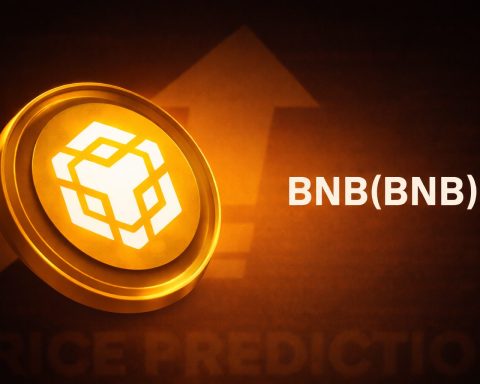- Price: WFC stock closed around $77.6 on Oct 10, 2025 [1] (last trading session before Oct 12), about +$34% over the past 12 months [2]. Recent volatility saw a ~2.8% drop on Oct 10 [3], but Wells Fargo is still near its 52-week high of ~$86.7 [4].
- Dividend: Shares yield about 2.2% annually [5], as the bank recently raised its quarterly payout to $0.45 (annual $1.80) [6]. The payout ratio is modest (~30%), suggesting the dividend is sustainable.
- Earnings: Wells Fargo will report Q3’25 earnings on Oct 14, 2025. Analysts expect ~$1.54 EPS on ~$21.1 billion revenue [7] [8] (up ~4% YoY). For Q2’25 (reported Jul 15), WFC earned $1.60 EPS on $20.82B revenue [9] [10] – beating forecasts. Net income hit $5.5B (vs $4.9B in Q1) [11], helped by improved efficiency.
- Outlook: 2025 guidance was mixed. Management said 2025 net interest income (NII) would be roughly flat vs 2024 [12], reflecting pressure from expected Fed rate cuts. CEO Charlie Scharf hailed the lifting of the Fed’s asset cap in Q2 as a “pivotal milestone” [13], opening the way for balance-sheet growth.
- Macro Impact: U.S. rates and economy strongly influence WFC. The Fed just cut rates in Sept 2025 (to 4.00–4.25%) and signals more easing [14] [15], which will help borrowers but eventually pressure bank interest margins. Banks are also riding a rebound in M&A and trading: all big banks (JPM, GS, MS, BAC, C, WFC) are set to profit from higher deal activity [16]. Investors will watch closely for commentary on credit quality and loan/deposit trends.
- News: Activists recently urged WFC to reinstate an independent board chair, reviving a governance debate [17]. Wells Fargo is also pursuing large fixed-income bond issues to fund growth [18]. Moody’s downgraded WFC’s long-term debt rating to Aa2 in May 2025 (citing the U.S. debt downgrade) [19] [20].
- Analyst View: Analysts are generally positive. Wall Street consensus is a “Moderate Buy” with an average price target ~$83.7 [21] (roughly 5–8% above current). About 9 analysts buy vs 9 hold [22]. Broker notes include Goldman Sachs (Buy, TP cut to $91) and modest upward moves in projections from DB and others. FMP notes analysts expect 2025 EPS ~$6.00 and 2026 ~$7.00 [23].
Current Stock Price & Recent Moves
Wells Fargo’s stock (NYSE: WFC) trades in the high $70s. It closed $77.62 on Oct 10, 2025 [24], down about 2.8% that day after a late-day sell-off. This follows an uptrend: over the past 12 months WFC is up ~34% [25], having rebounded strongly from a spring low around $58.42 [26]. Year-to-date (2025), WFC has risen roughly 12–15% in total, underperforming some high-flying peers but outpacing the broader market. Trading volume has picked up, with an average ~13M shares.
Technically, WFC is near the upper end of its 52-week range ($58.4–$86.7) [27]. Short-term indicators are mixed: it is above its 50- and 200-day moving averages, suggesting a bullish backdrop, though some analysts caution it has become somewhat overextended after the big rally. Overall, the stock has outperformed key financial indices this year, helped by better-than-expected profits and positive sentiment on banks [28] [29].
Recent News & Developments
Recent headlines for Wells Fargo include earnings preview, strategic moves, and governance issues. The bank is gearing up for its Q3 report on Oct 14 [30] [31]. Investors are focused on loan and deposit trends now that the Fed has lifted Wells Fargo’s asset cap (a growth limit imposed after past scandals). Management has said the removal of the cap “marked a pivotal milestone” in Wells Fargo’s turnaround [32]. The bank plans to use the cap relief to expand lending and hiring.
Meanwhile, the Accountability Board (an activist group) filed a proposal this week urging WFC to restore an independent board chair [33]. Simply Wall St notes this reignites the governance debate even as the bank conducts large bond offerings to strengthen capital [34]. These bond issuances (fixed-income offerings) signal Wells Fargo’s efforts to enhance funding flexibility and fuel new lending. The governance issue is seen as important by activists, but analysts say it’s unlikely to derail the near-term story, which is driven by earnings and regulatory relief [35].
On the regulatory front, analysts continue to watch compliance risks: Wells Fargo is still navigating ongoing Consent Orders and regulatory scrutiny, and any new compliance issues could hurt profits. In May, credit rating agency Moody’s downgraded WFC’s long-term rating (to Aa2) after the U.S. sovereign rating was cut [36] [37], reflecting reduced confidence in the bank’s high-grade debt (along with JPMorgan and BofA). This adds a note of caution for bond investors.
Earnings & Financial Performance
Wells Fargo’s recent earnings have shown modest growth and improving efficiency. In Q2 2025 (reported July), WFC earned $1.60 EPS and $5.5 billion net income [38] [39], up from $4.9B in Q1 and $4.9B a year ago. Revenue was $20.82 billion (up ~1% YoY) [40]. That beat Wall Street’s estimates on both EPS and revenue [41]. Return on equity ticked up to ~12.8% [42], and costs were kept relatively flat. However, net interest income (NII) slipped 2% YoY to about $11.7B [43], reflecting the impact of lower deposit costs and still-elevated interest rates. Notably, Wells Fargo’s reported NII ($11.71B) was slightly below analysts’ $11.84B forecast [44].
Management has acknowledged this pressure. In July, Wells Fargo cut its 2025 guidance for net interest income to be roughly in line with 2024’s ~$47.7B [45], rather than expecting growth. CEO Charlie Scharf emphasized that while the asset cap lift provides future growth potential, the near-term profitability will be tempered by rate cuts and competitive lending. He called the cap removal “a pivotal milestone” [46] for the firm’s recovery, but investors note that actual loan growth and margin trends will be key to watch in upcoming calls.
For the upcoming Q3 quarter, consensus forecasts (e.g. Zacks/Wall Street) see EPS around $1.54 and revenue about $21.1B [47]. Financial modelers expect roughly +4% YoY revenue growth and a 2.9% rise in NII (to ~$12.03B) [48], thanks to stable loan demand. Non-interest income (fees, etc.) is expected to grow ~4.5% on higher fees and investment banking activity [49]. Investors will watch closely whether Wells Fargo can sustain its efficiency gains (efficiency ratio ~64%) and whether provisions for credit losses remain low (bad loans have not spiked so far).
Expert Analysis & Sentiment
Analysts and strategists are cautiously optimistic on WFC. Many highlight Wells Fargo’s solid market position (rich branch network, leading U.S. mortgage lender) and renewed freedom to grow. A Director’sTalk interview noted Wells Fargo’s forward P/E of ~11.6 and ROE ~11%, calling these “respectable” [50] [51]. They also flagged that WFC’s dividend yield (~2.1%) and conservative payout ratio (28%) make it attractive for income investors [52].
Sentiment is generally positive: about 16 analysts rate WFC a buy, 7 hold and 1 sell [53] (an aggregate “moderate buy” consensus). The average price target (~$78.30) implies only modest upside (~3–5%) [54], reflecting a belief that much of the gains are already in. Simply Wall St’s fair-value work suggests the stock could be worth $74–100, with a mid-point around $89 [55] – implying ~15% upside by 2028 under growth assumptions. Their community forecast range ($74.70–$100.25) highlights divergent views on WFC’s long-term path [56] [57].
From the banking industry perspective, strategists note that Wells Fargo’s priorities (digital expansion, cost discipline, new cross-selling under regulatory relief) are similar to peers. With the Fed easing and M&A activity up, most analysts expect a reasonably good Q3 results for banks. Wells Fargo’s own analysts (e.g. at Wells Fargo Securities) have talked up a potential upside surprise in Q3 due to sustained fee income and improving credit quality. There have also been recent upgrades: for instance, Truist raised its TP to $88, and UBS trimmed its TP slightly, all still implying room above current levels.
Macroeconomic & Regulatory Factors
Wells Fargo’s fortunes are closely tied to the U.S. economy and Fed policy. After two years of tightening, the Fed cut rates 25 basis points in Sept 2025, marking the first cut since 2021 [58]. Fed officials, including New York Fed President Williams, now signal additional cuts later in 2025 [59] [60]. Falling interest rates should help borrowers (lower credit costs) and stimulate loan demand, which bodes well for loan growth at Wells Fargo. However, lower rates also compress banks’ net interest margins over time – a tradeoff noted by management.
Inflation is easing toward the Fed’s target: underlying inflation is “moving gradually lower,” according to Fed officials [61]. Wage growth has slowed modestly, and consumer credit remains solid. In this backdrop, banks have seen robust loan performance: big banks say U.S. borrowers remain in good health [62]. The key risk is if the economy slows suddenly (then defaults could rise) or if credit spreads widen. For now, analysts do not expect a sharp rise in delinquencies.
On regulation, Wells Fargo is in a much better place than a year ago. The Fed’s removal of the asset cap (June 2025) freed WFC to grow. Other restrictions have been easing (most of its consent orders from past scandals have been lifted). Still, compliance risks linger, so any new regulatory or litigation issues could hurt the stock. Outside the bank, the US government shutdown in Oct 2025 briefly delayed some economic data, adding uncertainty; but markets seem focused on the Fed and corporate earnings for now.
Competitors and Sector Performance
Among the large U.S. banks, Wells Fargo is broadly tracking peers. All the majors – JPMorgan, Citigroup, Bank of America, Goldman Sachs, etc. – are set to report Q3 results around the same time. According to Reuters, these “big banks” are poised to report stronger earnings thanks to a resurgence in dealmaking (M&A, IPOs) and robust markets [63]. Wells Fargo is somewhat more retail-focused than JPM or Goldman, but it has picked up investment banking fees and continues to gain commercial lending.
In terms of stock performance, Wells Fargo’s 34% 12-month gain [64] is in line with its peers: for example, JPMorgan and Citigroup have each run roughly 25–40% higher this year. Smaller banks like US Bancorp and PNC have also seen gains. The sector rally has been fueled by optimism over rate cuts and bank-friendly policies. It’s worth noting WFC traded at a much lower valuation than JPM last year, so much of the catch-up may already be priced in.
Analyst Forecasts & Ratings
Wall Street’s consensus forecasts for Wells Fargo are cautiously optimistic. As noted, analysts expect around $1.54 EPS on $21.1B revenue in Q3 [65]. For full-year 2025, analysts see roughly $6.00 EPS (per MarketBeat data), rising to ~$7.00 in 2026 [66]. The average price target is ~$83.7 [67]. That implies only moderate upside from current levels – reflective of a “fair” valuation after the run-up.
Brokerage notes have mixed outlooks: many banks reaffirm holds or buys but note that Wells Fargo’s upside is “modest” given the current price. Director’sTalk pointed out a modest potential 2.8% upside based on $78.30 target [68]. The overall rating split (Buy vs Hold) suggests analysts see steady growth but are not wildly bullish. If earnings beat estimates, or if NII surprises on the upside, targets could be revised higher. Conversely, any signs of weakening loans or renewed fines could depress sentiment.
Dividend & Shareholder Returns
Wells Fargo has restored dividend growth in 2025. The quarterly payout was raised from $0.40 to $0.45 in July 2025 [69], lifting the annual yield to about 2.2%. This yield is attractive in a low-rate world and the increase signals management’s confidence. The payout ratio (~30%) is low by historical standards, suggesting more room to raise the dividend if earnings continue up. WFC does not aggressively repurchase stock at the moment (more capital is being retained for balance-sheet growth), but it has buybacks authorized if needed.
Total shareholder returns (dividends + share price) have been strong: WFC is up ~34% in a year [70] plus the ~2% yield, outpacing the S&P 500. Over longer periods, however, Wells Fargo has trailed some tech and growth sectors. For income investors, the combination of a ~2% yield and reasonable growth in EPS (mid-single digits) is appealing. Analysts note that Wells Fargo’s payout is safer than many banks – it covered the dividend only ~30% with earnings, leaving a big buffer for any temporary earnings dip.
Sources: Recent stock and financial data are from Nasdaq and financial data providers [71] [72]. Earnings details come from company reports and news coverage [73] [74]. Forecasts and analysis are drawn from brokerage previews and media (TechStock², Reuters, Investing.com, Investopedia, etc.) [75] [76] [77] [78]. All quotes and data are current as of Oct 10–12, 2025.
References
1. www.financecharts.com, 2. www.financecharts.com, 3. www.financecharts.com, 4. www.financecharts.com, 5. www.marketbeat.com, 6. www.marketbeat.com, 7. site.financialmodelingprep.com, 8. site.financialmodelingprep.com, 9. www.investing.com, 10. www.investopedia.com, 11. www.investing.com, 12. www.investopedia.com, 13. www.investopedia.com, 14. www.reuters.com, 15. www.reuters.com, 16. www.reuters.com, 17. simplywall.st, 18. simplywall.st, 19. www.reuters.com, 20. www.reuters.com, 21. www.marketbeat.com, 22. www.marketbeat.com, 23. www.marketbeat.com, 24. www.financecharts.com, 25. www.financecharts.com, 26. www.financecharts.com, 27. www.financecharts.com, 28. www.financecharts.com, 29. www.reuters.com, 30. newsroom.wf.com, 31. www.marketbeat.com, 32. www.investopedia.com, 33. simplywall.st, 34. simplywall.st, 35. simplywall.st, 36. www.reuters.com, 37. www.reuters.com, 38. www.investing.com, 39. www.investing.com, 40. www.investing.com, 41. www.investopedia.com, 42. www.investing.com, 43. www.investing.com, 44. www.investopedia.com, 45. www.investopedia.com, 46. www.investopedia.com, 47. site.financialmodelingprep.com, 48. site.financialmodelingprep.com, 49. site.financialmodelingprep.com, 50. www.directorstalkinterviews.com, 51. www.directorstalkinterviews.com, 52. www.directorstalkinterviews.com, 53. www.directorstalkinterviews.com, 54. www.directorstalkinterviews.com, 55. simplywall.st, 56. simplywall.st, 57. simplywall.st, 58. www.reuters.com, 59. www.reuters.com, 60. www.reuters.com, 61. www.reuters.com, 62. www.reuters.com, 63. www.reuters.com, 64. www.financecharts.com, 65. site.financialmodelingprep.com, 66. www.marketbeat.com, 67. www.marketbeat.com, 68. www.directorstalkinterviews.com, 69. www.marketbeat.com, 70. www.financecharts.com, 71. www.financecharts.com, 72. www.marketbeat.com, 73. www.investing.com, 74. www.investopedia.com, 75. site.financialmodelingprep.com, 76. simplywall.st, 77. www.reuters.com, 78. www.reuters.com







